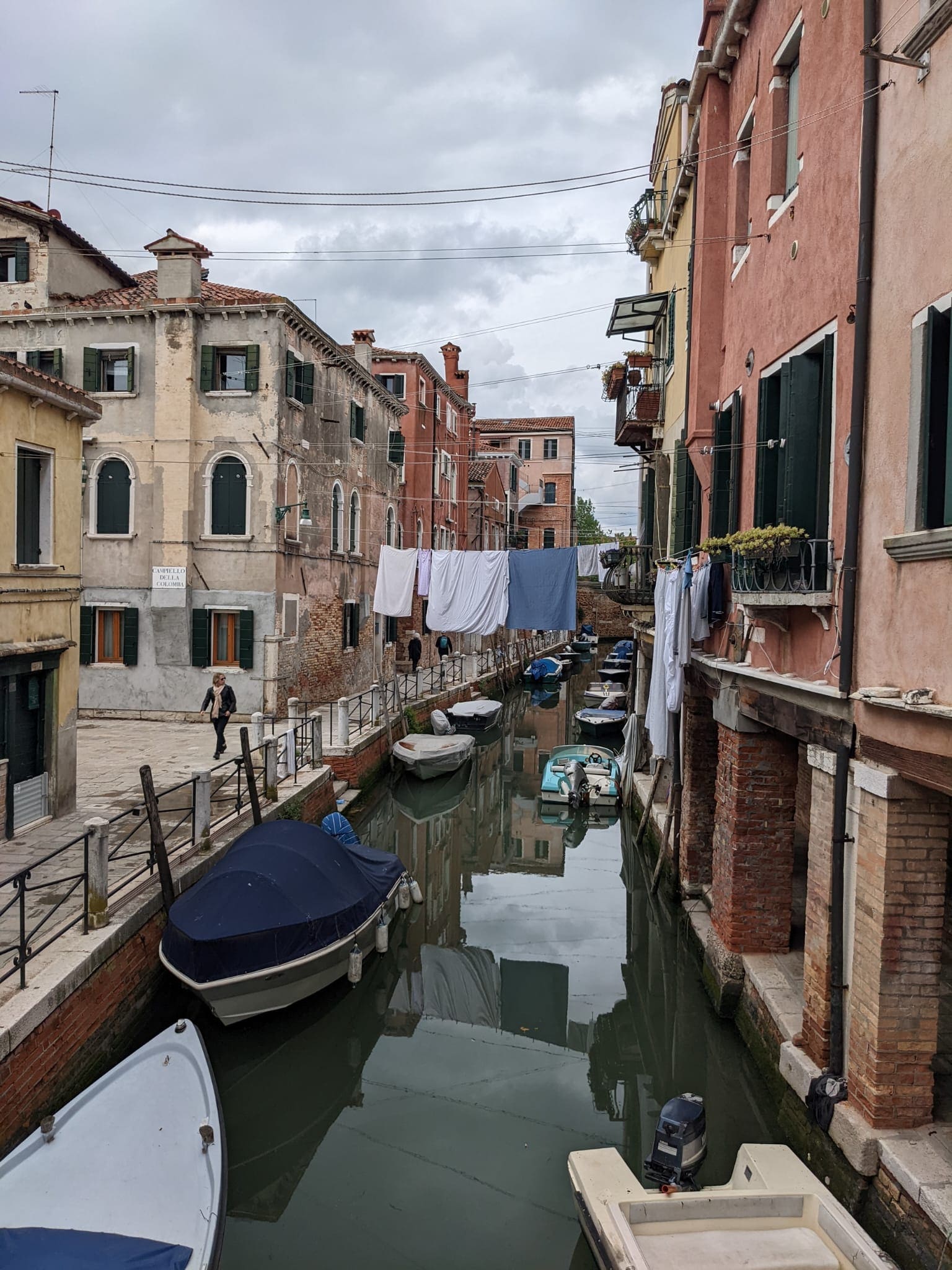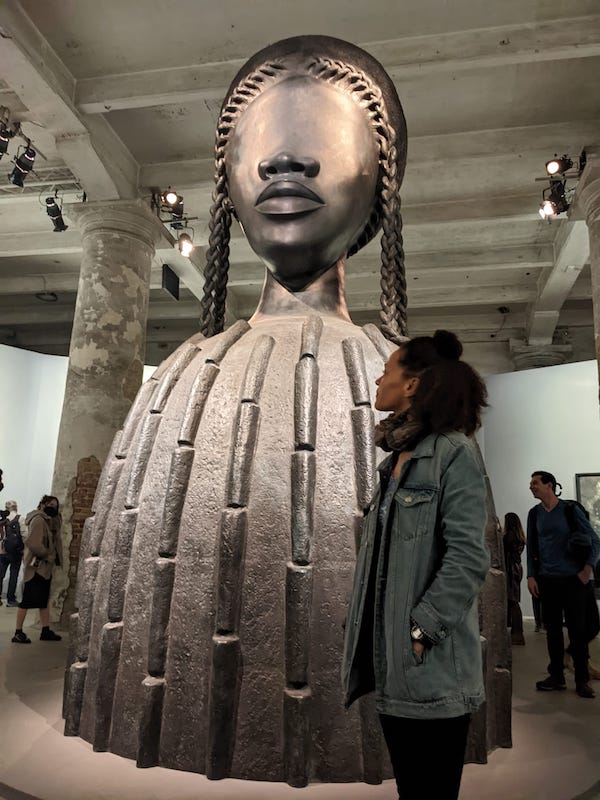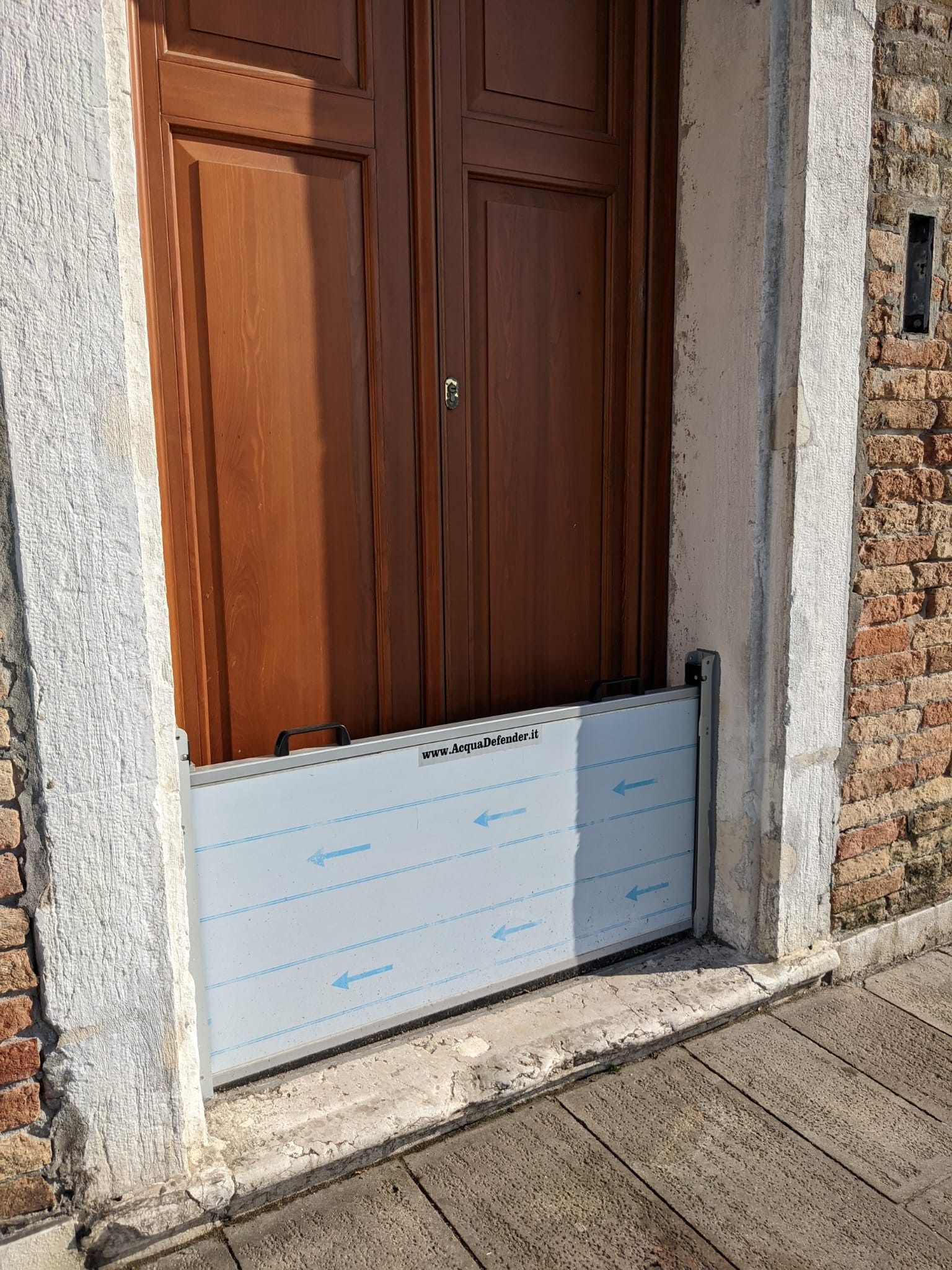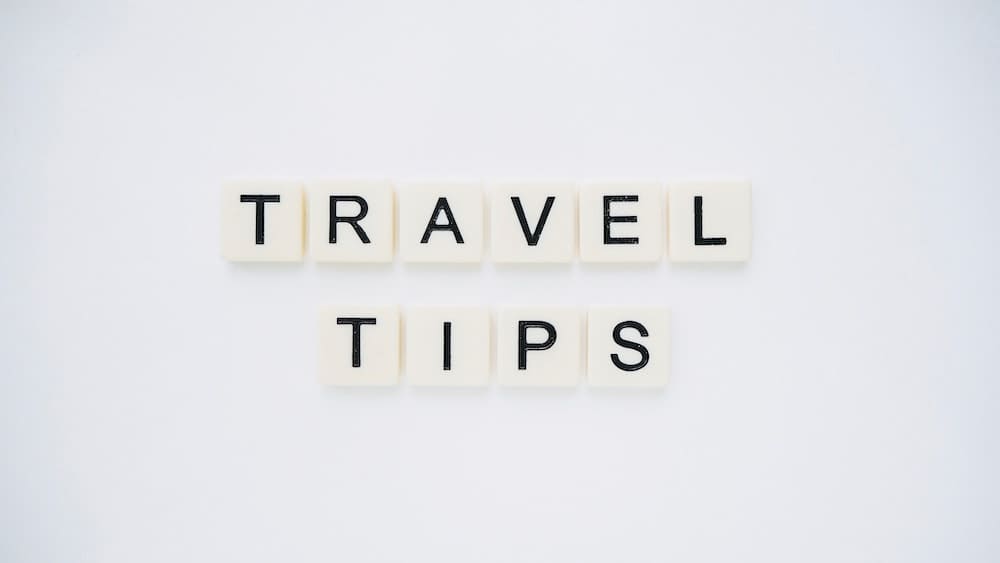Italia: Navigating Venezia.



Why Build a City "on water"?
There are two versions of how Venice became a city "built on water". One says invasions by Attila the Hun and Lombardy conquerors forced people to seek refuge in the lagoon that eventually becomes the City of Venice. The other version has the origins of Venice beginning 10km North on the island of Torcello where people inhabited the nearby lagoons well before the invasions. There was a booming industry for fish and salt that spurred the creation of the initial infrastructure of warehouses and buildings for the workers with the use of boats to travel and trade between the many islands on the lagoon. A combination of the booming industry and the fact that the harbour of Torcello silted up resulted in a spread of activity over to the region of Rialto which becomes the point from which Venice expands - now considered the center of Venice.
Venice is sinking...
And by 1mm-1.5mm per year.
Today, current inhabitants of Venice face the same challenges as their predecessors - problems related to the nature of the lagoon exacerbated by the Worldwide problem of climate change. There seems to be multiple conflicts of interest or a conundrum of what will sustain the economy yet also preserve the foundational beauty of the City.
The current challenges are flooding and foundational infrastructural deterioration from excess marine activity, industrial and agricultural waste and burgeoning tourism. Here we witness the double edged sword of creating a marvel. Everyone is invited to Venice and most accept the invitation - and with successful lobbying by the locals, the arrival won't be by cruise ship.

In this video, "Venice Backstage: How does Venice work?", we learn how the City manages to coexist with the increasingly corrosive ebb and flow of the lagoon. The Venetians are constantly filling, repairing and bolstering what is crumbling, overflowing or sinking. What was once a canal becomes a street. And this constant reinvention of itself has gone on for years in tandem with the City's other dedication to reinvention - art.
The situation is dire and applying solutions NOW is critical. As a visitor/tourist, one can help by not contributing to the environmental strain and practicing "slow & sustainable tourism". There are several campaigns educating visitors on how to help.
Sustainable tourism is tourism committed on the one hand to generating a low impact on the surrounding environment and community by acting responsibly and on the other hand it is committed to generating income and employment for the local economy.
How to Visit Venice Sustainably(and not be annoying - I think this is what they also really want to say...)
- Venice encourages visitors to use public transport
- Detourism Campaign: A campaign focused on seasonal and geographical distribution. What does that look like? Visit during off season and wander away from the well-trodden tourist routes
- Greener accommodation: minimize waste of energy and water use
- Be mindful not to block walkways while taking photographs
- Avoid guiding/organizing large groups through the narrow streets frequented by local residents. And make sure your large group doesn't block entrances to buildings
- Keep to the right when walking
- Hire professional local guides
- Consume traditional, local crafts from the artisan workshops and not the fakes
Where to Stay: Island Life
After a booking gone wrong (I was supposed to be staying at a hotel in the San Marco area of Venice), I ended up staying on two of the surrounding islands - * Water Bus has entered the chat * but more on transportation in the next section...
Sometimes, plans gone wrong are a blessing in disguise. I didn't stay in the centre of Venice but I got to experience two other islands - Giudecca with its fantastic view of the grand canal with San Marco Square and the chic, mostly residential island of Lido. Away from the crowds, there was a sense of calm and the feeling of coming home after a long day of exploring. The other bonus is on these outer islands you will find restaurants mostly filled with locals (and where did we eat? See below!)

Getting Around Venice: An Exercise in Strategic Planning
Unless you have hired a private boat(Not recommended. Read the visiting sustainably section above), using the public water buses(Vaporetti) will be inevitable for those wanting to explore Venice without too much walking and for those with accommodations off the "main islands of Venice" (I am referring to the group of islands in the first image).
A standard ticket currently costs 7,50 EUR. With this ticket you can use the included transportation(boats and buses) for up to 75-minutes. There are daily and multi-day passes that you can purchase that allow you unlimited rides. These unlimited passes will be valid the purchased amount of hours from the time you first scan it. Be aware that the unlimited passes are not valid 75-minutes after your last scan. eg. You purchased a 24-hour pass on Wednesday at 10am. On Thursday, you scan your pass at 9:50 and take a boat ride that is 15 minutes. Your 24-hour pass will expire at 10h and you will not be able to use it another boat or bus past that time even though it has been less than 75-minutes.


While I didn't see any Traghetto (there are designated docks for them)in operation while in Venice, it is another option and cheaper alternative to using the Vaporetti. See this link for info on where to catch one.
Advisory: Prepare for some wave motion. When I was there, in May, the water of the grand canal was "choppy" (lots of small waves) which meant that the floating docks where you wait for the Vaporetto, some boat rides and boarding the boats will be a slightly unstable event.
Where & What to Eat
People are going to tell you to go find a small Bacaro. Listen to them.
A quick search on your mobile will give you the ones closest to you and have public reviews so I don't need to advise you there. FYI: Most traditional food in Venice contains seafood.
Feeling snackish?(I always am!) Go for these typical popular Venetian selections:
- Cicchetti: small amounts of foods to eat with a glass of wine or beer - ex. toasted slices of bread with toppings. It's basically like a tapas or aperitivo selection.
- Tramezzini: triangular sandwiches made on soft, crustless white bread

We also had wonderful meals on the Lido & Giudecca islands. Remember to wander away from the beaten track!


Artisan Venezia
Everywhere you look in Venice there is a poster announcing an artistic event or show - most with free entry. As you walk through the maze of calle (streets) you sometimes are invited to come inside to view a gallery just as you are invited to eat at a restaurant by eager hosts. In addition to galleries, there is a tradition of handmade and beautifully crafted items made by local artisans.
La Biennale di Venezia 2022
Since 1895, Venice has organized La Biennale di Venezia - an International Art Exhibition in which artists from around the World display their work. The exhibition not only includes art but also exhibits of architecture, music, dance, film and theatre.
This year's Biennale is titled "The Milk of Dreams". The title, chosen by curator Cecilia Alemania, comes from a book written by Surrealist, Lenora Carrington. In this book there "are stories of transformations and metamorphoses from human to animal and from mineral to machine. I wanted to take this celebration of coexistence as a leitmotif for my Biennale, which embarks on an imaginary journey through the metamorphoses of the body and definitions of the human.", says Alemania.
She was also inspired by philosophers that showed how we live in a post-human world which is that, the idea of the human as the center of the world, is now obsolete.
The Biennale focuses on three themes:
- The representation of bodies and their metamorphoses
- The relationship between individuals and technologies and
- The connection between bodies and the Earth
Sources: Interview of Cecilia Alemani by Sebastian Frenzel for a special issue of monopol magazine and La Biennale di Venezia official website

Tips for attending La Biennale di Venezia
- Pack a Snack: I lead with this tip because I'm always hungry. There are food venues inside the Arsenale and Giardini locations however, you might not want to have a meal there. We wanted to eat at a local Bacaro (which are located outside the ticketed area) thus delayed our grumbling stomachs from eating so we could see a few more exhibits. Why the trouble? - see the next point.
- No Re-Entry: Once your exit the ticketed Arsenale and/or Giardini locations, you cannot return. Your ticket guarantees only one entry to each location. So gather all your energies and prepare for a marathon of Art. Pack those snacks!
- Early Birds See the Art First: Get there early. At some venues, there are long lines for entry but they did move fast.
- Get the App: There are a couple apps out there with informations and maps of the Biennale events. Some only for iPhone. I did find a decent one that works on my Android mobile powered by Bloomberg Connects
- Discover the Affiliated Gallery Exhibitions throughout the City: Talk a walk around the City, get lost in the maze of tiny streets(calle) and soon enough you will find one of the many free exhibitions related to the Biennale and even others that aren't.

What Venice is mostly known for: Carnevale
I haven't attended so my apologies but I have no personal insight for Carnevale at this time. Here is the official website.

Venice Tips
- From June 2022, there might be a 10 euro entry fee to enter Venice
- Use the bag storage at your hotel or at a nearby hostel
- Wear comfortable shoes for lots of walking
- Get familiar with the 24hour clock
To see Venice in action, check out the EURHere.com insta stories titled: "Venice 2022"

